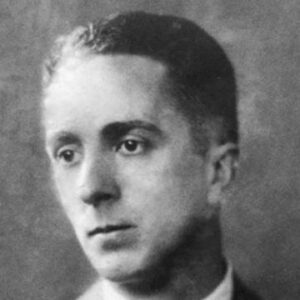Norman Perceval Rockwell was a painter and illustrator based in the United States. His work was an artistic portrayal of the American culture and spirit of its people; he was influenced by civil rights, poverty, national and international events, and space exploration. He spent the majority of his career illustrating for the ‘Saturday Evening Post,’ a collaboration that lasted approximately 47 years and produced 321 magnificent covers. Apart from the Post, Rockwell contributed to publications such as ‘Look,’ ‘Peoples Popular Monthly,’ ‘Life Magazine,’ and ‘The Literary Digest,’ among others. Throughout his career, he created over 4,000 illustrations and paintings. Several of his iconic works include the 1927 commemoration of Charles Lindbergh’s Atlantic crossing, Neil Armstrong’s left foot on the moon’s surface following the successful moon landing, and the World War II ‘Four Freedom’ series. Apart from illustrating for magazines and publications, Rockwell attended classes at Otis College of Art and Design, wrote his autobiography, ‘My Adventures as an Illustrator,’ and painted portraits of notable figures such as President John F. Kennedy, Richard Nixon, Lyndon B. Johnson, and Jawaharlal Nehru.
Childhood & Adolescence
Norman Rockwell was the son of Jarvis Waring Rockwell and Anne Mary Rockwell in New York City. His father was a manager at a textile firm in Philadelphia, and his mother was a housewife.
Rockwell knew from an early age that he wanted to be an artist. At the age of 14, he enrolled in classes at The New School of Art and later dropped out to attend the National Academy of Design.
He later enrolled at the Art Students League of New York and began working as an illustrator for the ‘Boy’s Life’ magazine shortly after graduation.
Career of Norman
In 1916, Rockwell, then 22, created his first cover for the ‘Saturday Evening Post.’ This was the start of a collaboration that lasted the next 47 years of his life.
Rockwell’s subsequent successes include ‘Circus Barker and Strongman,’ ‘Gramps at the Plate,’ ‘Redhead Loves Hatty Perkins,’ ‘People on a Theatre Balcony,’ and ‘Man Playing Santa.
His successful work in the Post landed him additional assignments from prestigious publications such as ‘The Literary Digest,’ ‘The Country Gentleman,’ ‘Leslie’s Weekly,’ ‘Judge,’ ‘Peoples Popular Monthly,’ and ‘Life Magazine,’ among others.
During World War I, Rockwell attempted to enlist in the army but was turned down due to his weight. He spent the following night indulging in fatty foods, which resulted in his enrollment as a military artist.
Rockwell created the ‘Four Freedom’ series during WWII, which was inspired by Franklin D. Roosevelt. He explained the four universal rights principles in the series: ‘Freedom from Want’, ‘Freedom of Expression’, ‘Freedom of Worship’, and ‘Freedom from Fear’.
Around the 1940s, he was approached by writer Elliot Caplin, the brother of cartoonist Al Capp, with the idea of collaborating on a comic strip, with Rockwell providing the illustrations.
King Features Syndicate had promised Rockwell a $1000 per week deal, but the project was canceled due to Rockwell’s reputation as a perfectionist who was unable to complete the work at the required pace.
He spent the winter months as artist-in-residence at Otis College of Art and Design during that time period, and his students occasionally modeled for his Post covers. He donated an original Post illustration to help raise money for the college library in 1949.
In 1960, following his wife’s untimely death, Rockwell took time off work to write his autobiography, ‘My Adventures as an Illustrator,’ with the assistance of his son. The Post cited passages from his book.
He left the ‘Saturday Evening Post’ in 1963 and spent the remainder of his career illustrating for the magazine ‘Look.’ His work at ‘Look’ was motivated by his convictions regarding civil rights, poverty, and space exploration.
In 1968, Rockwell illustrated the album cover for Mike Bloomfield and Al Kooper’s ‘The Live Adventure of Mike Bloomfield and Al Kooper’. He also painted portraits of notable figures such as President John F. Kennedy, Lyndon B. Johnson, and Jawaharlal Nehru.
Significant Works of Norman
The most illustrious work of Rockwell’s life is considered to be his forty-seven-year association with the ‘Saturday Evening Post,’ for which he created 321 illustrations and published some of his most famous artistic works.
Awards and Accomplishments
In 1977, Rockwell was awarded the Presidential Medal of Freedom, the highest civilian honor bestowed by the United States of America.
Personal History and Legacies
From 1916 to 1930, Rockwell was married to Irene O’Connor. She served as the inspiration for his illustration ‘Mother Tucking Children into Bed (1921)’. Their marriage was annulled.
He married Mary Barstow, a schoolteacher, in 1930, and together they had three sons: Jarvis, Thomas, and Peter. Mary died suddenly of a heart attack in 1959, leaving him depressed for years.
He married Mary Leete ‘Molly’ Punderson for the third time in 1961 and remained married to her until his death. Rockwell died of emphysema in 1978 in Stockbridge, Massachusetts, at the age of 84.
Estimated Net Worth
Norman Rockwell net worth: Norman Rockwell was an American author, painter, and illustrator who, after inflation, had a net worth of $26 million at the time of his death.
Norman Rockwell was born in February 1894 in New York City, New York, and died in November 1978. For nearly 50 years, he illustrated the covers of The Saturday Evening Post magazine.
Trivia
Rosalynn Carter, the First Lady, attended his funeral. He and his family relocated to Stockbridge, Massachusetts, in order for his second wife to receive treatment at the Austen Riggs Center, a psychiatric facility.
For many years, Rockwell received psychiatric treatment from the analyst Erik Erikson.
In his lifetime, he created over 4,000 unique works.
A few years before his death, Rockwell established a trust to ensure that his artistic legacy would continue to thrive long after his death; this was the impetus for the establishment of the Norman Rockwell Museum in Stockbridge.


